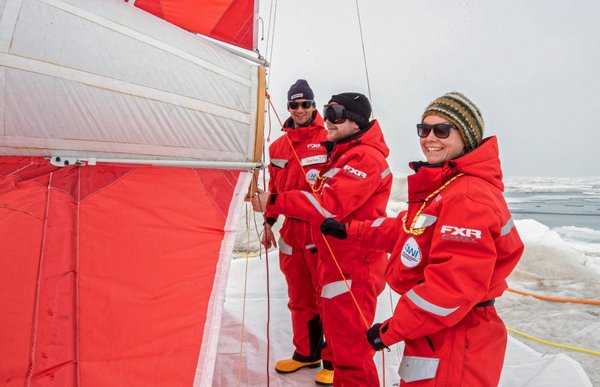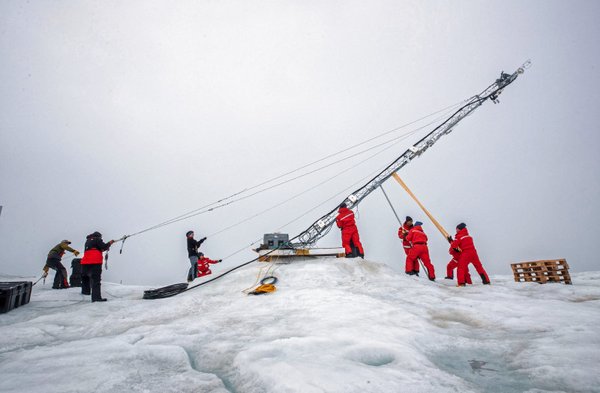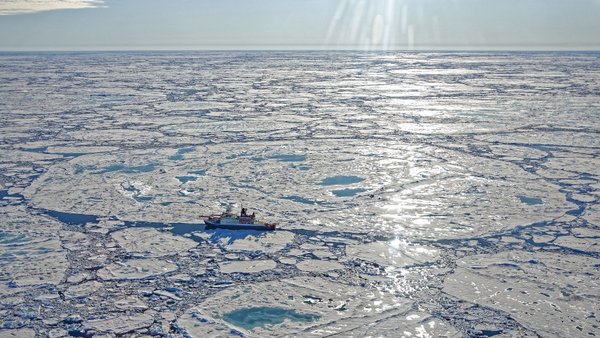
Last time 'Beluga' is being taken down, the second tethered balloon and 'Miss Piggy's' big brother, which has been up in the air since spring 2020. Flying several hundred metres high, sensors can be send up and down to measure radiation, temperature, humidity etc. in the lower atmosphere. Photo: Lianna Nixon, University of Colorado

Last time 'Beluga' is being taken down, the second tethered balloon and 'Miss Piggy's' big brother, which has been up in the air since spring 2020. Flying several hundred metres high, sensors can be send up and down to measure radiation, temperature, humidity etc. in the lower atmosphere. Photo: Lianna Nixon, University of Colorado

Tethered balloon 'Miss Piggy' has regularly been up in the air since autumn 2019. Photo: Lianna Nixon, University of Colorado

All teams work together to recover instruments from the central observatory on the ice floe. The so-called ADCP (Acoustic Doppler Current Profiler) for oceanographic measurements has been deployed in the ocean under the ice and is now fixed on a sledge to transport it back home to Plarstern. Photo: Lisa Grosfeld, AWI

Packing up instruments in Met City, which is situated directly next to a melt pond. Photo: Lianna Nixon, University of Colorado



